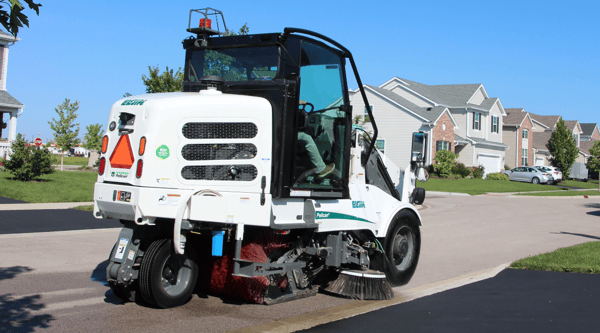Published on January, 19 2023
5 Considerations for Your Next Sweeper
Elgin has continuously reinvented the street sweeping space since its introduction of the world’s first motorized street sweeper in 1914. Now with a plethora of street sweepers for various applications and a suite of technology options, it can be overwhelming deciding which street sweeper will be the all-star for the job you’re managing. That’s why we’re outlining some key considerations when making that choice.
1. Decide the application and type. This should be the easiest part because you’re the expert in your field, and you know how the sweeper will be used. Will it be used across your municipality? At an airport? In construction? Or at an industrial operation? There’s an Elgin for each job. Plus, once you determine the application, you can finetune for specifics. For example, regenerative air sweepers are generally good for airports, and beyond that, the CrossWind GRS is designed specifically for airports and includes a glycol recovery system.
Sweepers use different methods to gather and remove debris, so it’s crucial to understand these differences.
- Mechanical Broom: This uses a side broom to follow the contours of the road moving debris into a windrow for the main broom, which then flicks the surface debris up and onto the Elgin exclusive chevron conveyor belt or squeegee elevator to deposit into the hopper.
These traditional sweepers can clean up bulky, dense or fine as sand debris making them great for construction debris, early spring cleanup and after flooding.
- Regenerative Air: In this type of sweeper, side brooms again move debris into a windrow to be collected, but instead of a mechanical broom, regenerative air sweepers utilize an air powered pickup head. the pressurized side of the pick-up head agitates the surface of the pavement which is then transferred across the length of the pickup head through an air-knife while the vacuum side captures airborne debris and carries it up and into the hopper.
The pickup head on regenerative air sweepers can collect heavier debris, such as leaves, but they really excel when picking up light and medium debris like sand and other fine particulates found at airports. At the start of the cleaning process water is sprayed, which adds mass to the material being collected to ensure that even the finest particles are picked up from the surface.
- Pure Vacuum: These sweepers use an open-ended air flow path, in which the suction of high-powered nozzles vacuum up debris that is then conveyed up and into the hopper where it settles out of the airflow path. Side brooms follow the contours of the road and move debris into the windrow for the suction nozzles. These are useful for dual-purposes including catch-basin cleaning.
- Industrial Sweeper: The waterless dust control system in these sweepers enables increased pickup of debris along with the safe removal of water-reacting materials. It easily handles heavy, compacted dirt and bulky debris as well making it ideal for industrial sweeping.
2. Look ahead to sustainability. The industry along with many others is advancing towards ways to save energy. This includes a single-engine sweeper instead of dual engine. It also means hybrid technology. The Hybrid Broom Bear and Hybrid Pelican are plug-in hybrid electric street sweepers that help reduce fuel consumption while providing the same powerful performance of their non-hybrid counterparts.
3. Determine the maneuverability and distance to be covered. Where will the sweeper be operating? If it’s a crowded metro requiring the ability to maneuver around parked vehicles, you’ll want a more compact sweeper with great maneuverability such as the three-wheeled Pelican, which offers 360-degree visibility. If the sweeper will need to travel a large distance, consider one of Elgin’s many truck-mounted options. These units can handle tight situations like cul-de-sacs but can travel at highway speeds.
4. Understand how the choice impacts the operator. Elgin offers 4 sweepers that do not require a CDL – the Pelican, Broom Badger, 26K Broom Bear, and 26K RegenX. That’s a difference that impacts today's ever-tightening recruitment pool.
5. Consider uptime. Your sweeper should be reliable. Consider the accessibility of areas that need regular service. You should also think about the system it uses – fewer moving parts means more reliability.
Fill out this form for more information as you decide on your next sweeper.

